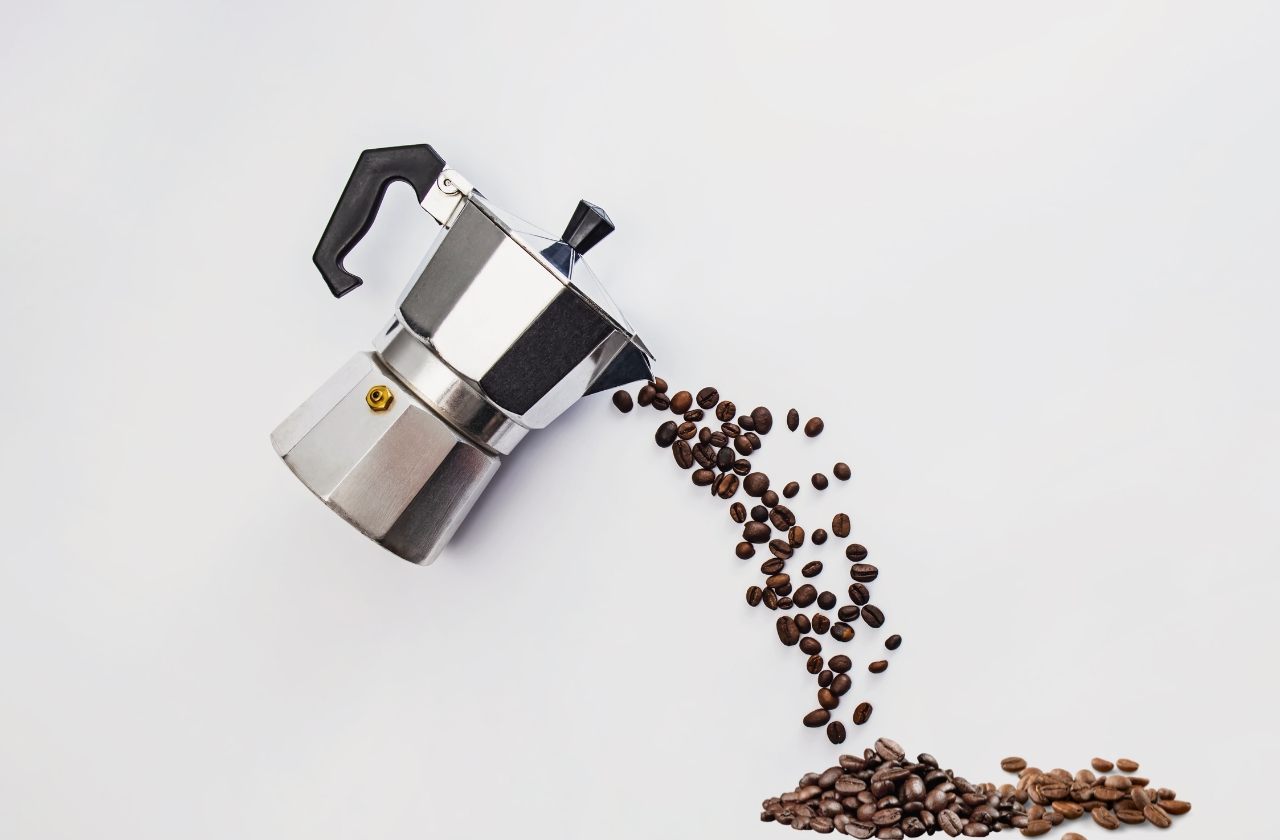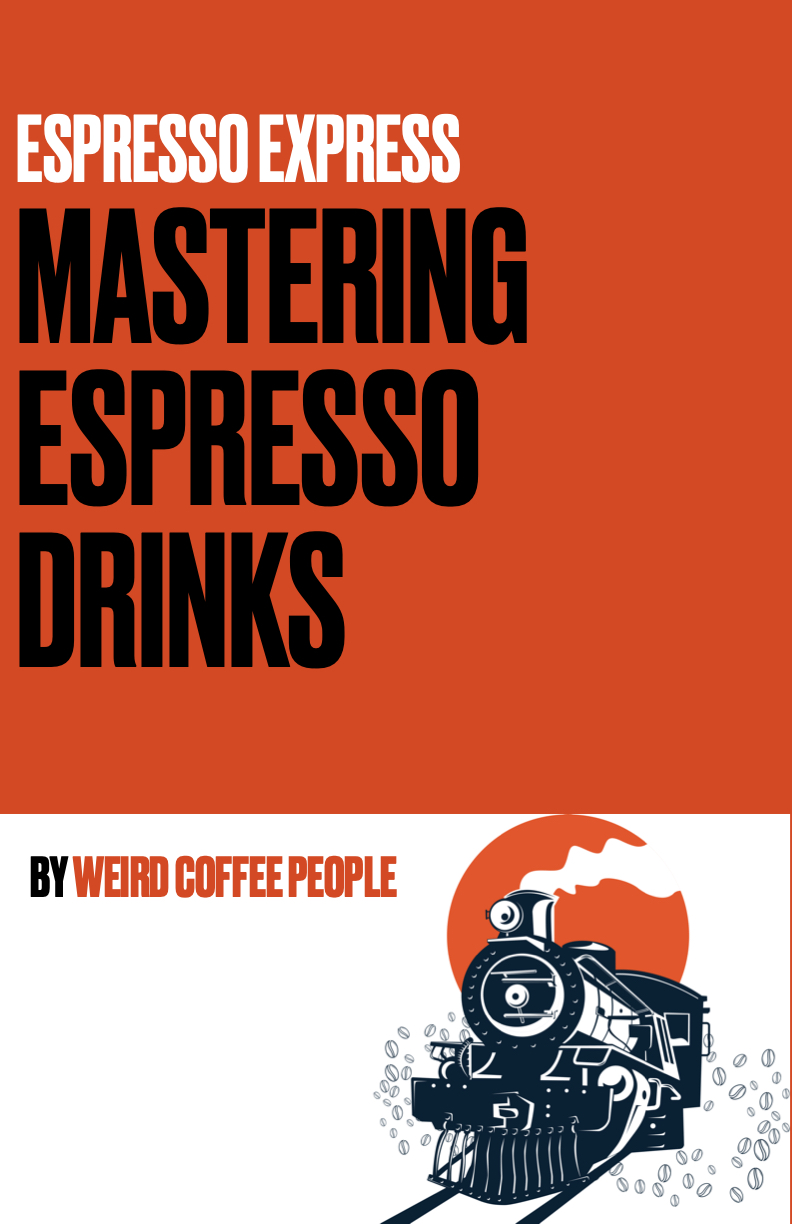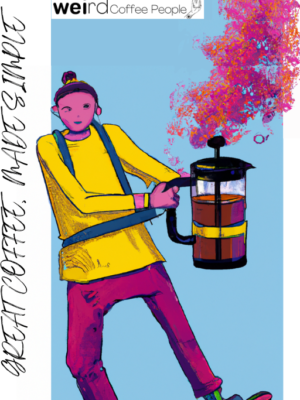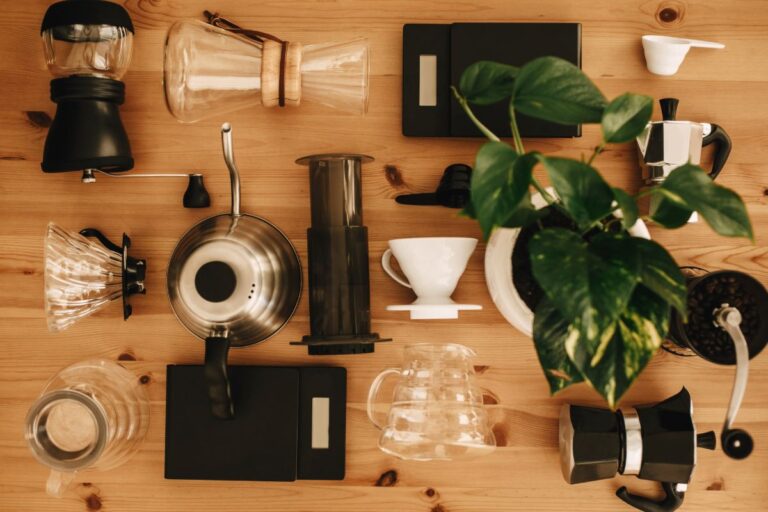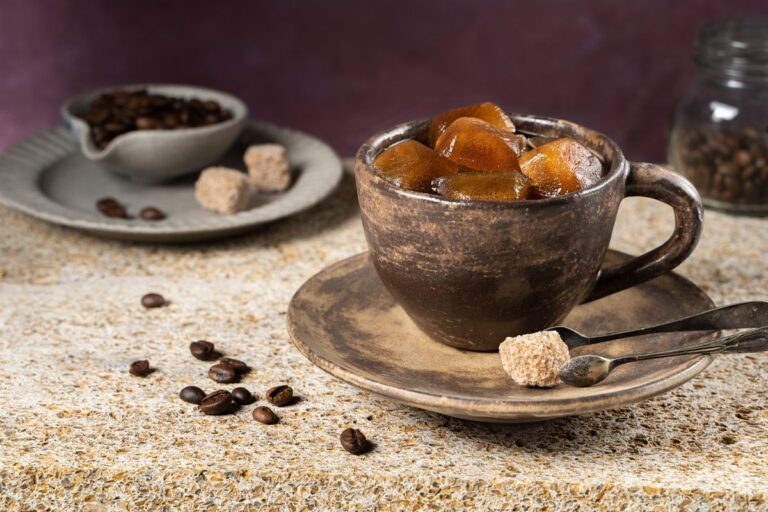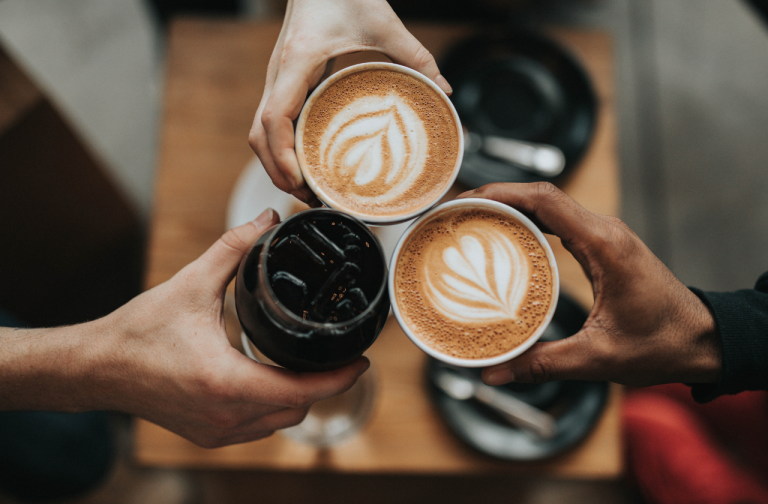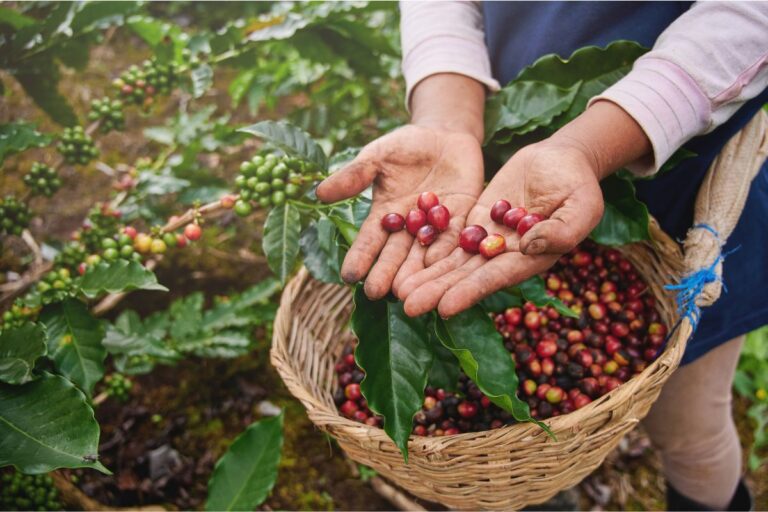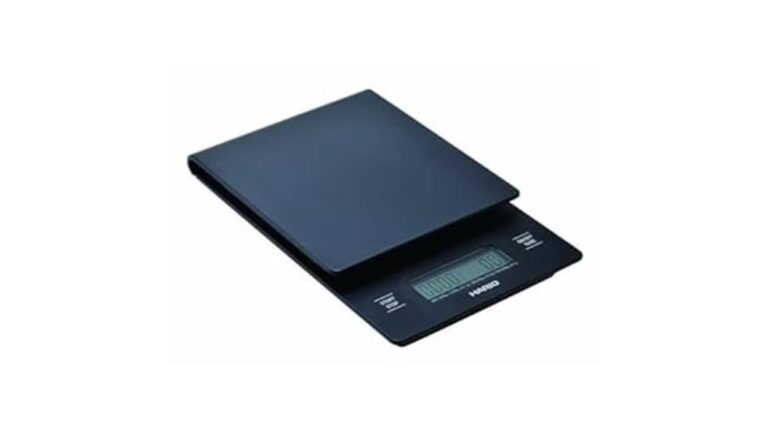Ultimate Guide to the Best Coffee for Moka Pot Brewing: Top Brands, Roasts & Grinds
Welcome to the world of Moka pot brewing, a realm where the art of making rich and robust coffee converges with simplicity and tradition. For coffee enthusiasts, the Moka pot is not just a brewing tool; it’s a gateway to a unique coffee experience, blending the convenience of home brewing with the essence of an espresso-like concoction.
The Moka pot, also known as a stovetop espresso maker, is a classic and beloved coffee brewing device that has been around for decades. It is a simple yet elegant way to brew a rich, flavorful cup of coffee, similar to espresso, but at a fraction of the cost. Choosing the best coffee for moka pot brewing is key to optimizing the coffee produced with this method.
In this guide, we will discover what makes Moka pot coffee so distinctive. But here’s the twist: the secret to a mesmerizing cup of Moka pot coffee lies not just in the technique but significantly in the choice of coffee itself. The beans you choose play a pivotal role in the dance of flavors that unfold in your cup. The right beans, roast, and grind can elevate your Moka pot coffee from good to exceptional. We will help you find the best coffee for Moka pot brewing to extend your coffee brewing repertoire!
Key Takeaways
- The Right Roast and Grind: We’ve learned that the choice of coffee roast and grind size are crucial in Moka pot brewing. Medium to dark roasts and a medium-fine grind size are generally the best choices to unlock the full potential of your coffee beans.
- Quality and Sustainability Matter: Selecting high-quality, sustainably sourced coffee beans not only ensures a superior cup of coffee but also supports ethical and environmentally friendly practices in the coffee industry.
- The Italian Connection: Embracing the Italian roots of the Moka pot adds a layer of authenticity to your brewing experience, allowing you to savor a part of Italian coffee culture with each sip.
- Brewing Techniques: Mastering the Moka pot involves understanding the nuances of water temperature, grind consistency, and brewing time. These elements, when balanced correctly, lead to a perfect brew every time.
What is Moka Pot Brewing
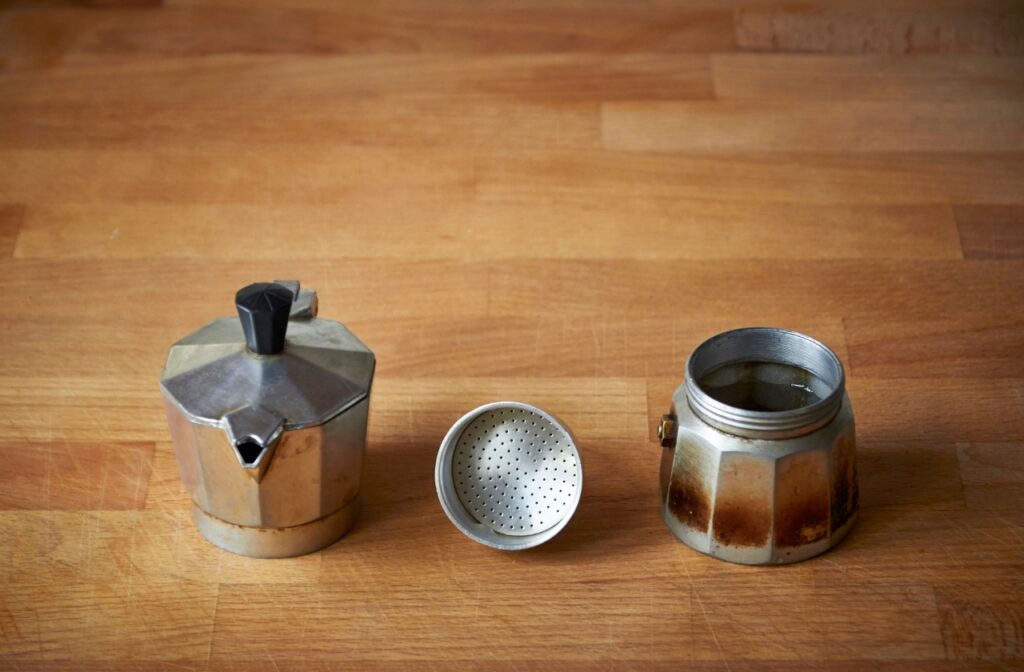
Originating in Italy, the Moka pot brewer is an iconic coffee maker that has graced the kitchens of coffee lovers worldwide. At its core, the Moka pot is ingeniously simple, consisting of three main chambers: the bottom chamber for water, the middle for coffee grounds, and the top where your brewed coffee collects.
How Does a Moka Pot Work?
The magic of the Moka pot lies in its brewing process. It begins with water in the lower chamber. As you heat the pot on a stove, the water heats up, building pressure. This pressure eventually forces the water upwards through the coffee grounds located in the middle chamber. The final act of this brewing ballet occurs when the now flavor-infused water reaches the top chamber, presenting you with a rich and aromatic coffee.
The Moka Pot’s Unique Brew
What sets Moka pot coffee apart? It’s the brewing method. Unlike drip coffee, the Moka pot uses pressure, similar to an espresso machine, but at a lower intensity. This process results in a coffee that’s more concentrated than your regular drip brew but slightly less intense than a traditional espresso. The outcome is a robust, flavorful coffee with a character distinct to the Moka pot.
Understanding The Moka Pot Method Impact On Coffee Flavor
The Moka pot’s brewing style significantly influences the coffee’s flavor. The pressure and heat together extract more oils and soluble compounds from the coffee grounds, resulting in a brew that’s rich and full-bodied. The intensity of the flavor extraction is a hallmark of Moka pot brewing, making the choice of coffee beans and grind size crucial elements in crafting the perfect cup.
In the next sections, we’ll dive into the details of selecting the right coffee beans and grind size for your Moka pot, ensuring that every cup you brew captures the essence of this unique brewing method. Stay tuned for a journey through roasts, grinds, and the art of selecting the best coffee for Moka pot brewing.
The Importance of Roast Type in Moka Pot Brewing

The first aspect of selecting the best coffee for moka pot brewing is selecting the best roast level suited to this method. The type of roast you choose can significantly impact the flavor profile of your coffee.
The roasting process brings out the oils, aromas, and flavors in the coffee beans. In Moka pot brewing, where extraction is intense, the roast type plays a key role in defining the final taste of your brew.
Choosing the Right Coffee Roast for Your Moka Pot
Medium to dark roasts are generally the go-to for Moka pot enthusiasts. These roasts offer a rich flavor, lower acidity, and a creamy body, making them well-suited for the high-pressure environment of the Moka pot. The intense brewing process complements these roasts, enhancing their inherent characteristics.
The following table compares the main features of different coffee roast levels.
| Roast Type | Flavor Notes | Acidity Level | Body |
| Light Roast | Floral, fruity notes | High | Light |
| Medium Roast | Balanced, with hints of spice and chocolate | Moderate | Medium |
| Dark Roast | Bold, with notes of caramel and nut | Low | Full-bodied |
Light roasts, known for their higher acidity and uneven flavor extraction in a Moka pot, are less commonly recommended. These roasts can result in a more acidic cup, which might not pair well with the Moka pot’s brewing style. However, some coffee drinkers appreciate the unique, bright flavors that light roasts can offer in a Moka pot.
While dark roasts are a popular choice, it’s essential to keep in mind that they can sometimes produce a bitter aftertaste. This bitterness is due to the extended roasting process, which can lead to the development of more bitter compounds in the beans.
If you’re sensitive to bitterness, you might want to experiment with medium-dark roasts or blends that balance bitterness with sweetness and acidity.
Experimentation: Key to Finding Your Perfect Match
The best roast for your Moka pot ultimately depends on personal preference. Some coffee drinkers prefer the bold, intense flavors of a dark roast, while others might enjoy the nuanced, complex profiles of medium roasts. The key is to experiment with different roasts to find the one that best suits your taste buds and complements the Moka pot’s brewing style.
In the next section, we’ll explore the critical aspect of grind size and its impact on Moka pot brewing, further guiding you toward crafting that ideal cup of coffee.
The Role of Grind Size in Moka Pot Coffee
Grind size plays a critical role in coffee brewing, especially in a Moka pot. The size of the coffee particles affects how water interacts with the coffee during brewing, influencing extraction rates, flavor, and the overall quality of the cup. Consequently, the grind size is key in selecting the best coffee for moka pot brewing.
Optimal Grind Size for Moka Pot Brewing
For Moka pot brewing, the ideal grind size is medium to medium-fine. This grind size strikes a balance, allowing for proper extraction without over-extracting, which can lead to bitterness or under-extracting, which can result in a weak and underwhelming brew.
Grind Size Comparison For Coffee Brewing Methods
| Grind Size | Description | Suitability for Moka Pot |
| Fine (Espresso) | Powdery, similar to table salt | Too fine, may cause over-extraction and clogging |
| Medium-Fine | Slightly coarser than sand | Ideal for balanced extraction |
| Medium | Similar to coarse sand | Suitable, but may under-extract if too coarse |
| Coarse (French Press) | Chunky, similar to sea salt | Too coarse, leads to weak and under-extracted coffee |
A grind that’s too fine for a Moka pot can lead to over-extraction and a bitter taste. Additionally, it can clog the filter, creating excessive pressure and possibly a safety hazard.
Conversely, a grind that’s too coarse will result in under-extracted coffee. This means the water passes through the grounds too quickly, not extracting enough flavor, leading to a flat and watery cup.
Weird Coffee Tip: Brewing with a French Press requires a coarse grind for your coffee beans. A coarse grind ensures that the coffee is evenly extracted during the steeping process, preventing over-extraction and bitterness. Read all about French Press brewing in our article below!
Best Coffee For French Press
Grinding Your Beans: For Best Moka Pot Brewing Results
It’s recommended to grind your beans fresh for each brew. This practice ensures the best flavor and allows you to adjust the grind size more precisely. A burr grinder is preferable over a blade grinder as it provides a more consistent grind size.
Grinder Types Comparison
| Grinder Type | Grind Consistency | Recommended for Moka Pot |
| Burr Grinder | Consistent and uniform | Yes, highly recommended for optimal results |
| Blade Grinder | Inconsistent, can be uneven | Not ideal, may lead to uneven extraction |
As with roast types, experimenting with grind size is key to achieving your perfect cup of Moka pot coffee. Slight adjustments in grind size can lead to noticeable differences in flavor and strength. Start with a medium-fine grind and adjust based on your taste preferences and the results you observe.
Stay tuned to discover how to select the best beans and brewing techniques for your Moka pot experience.
Choosing the Right Coffee Beans
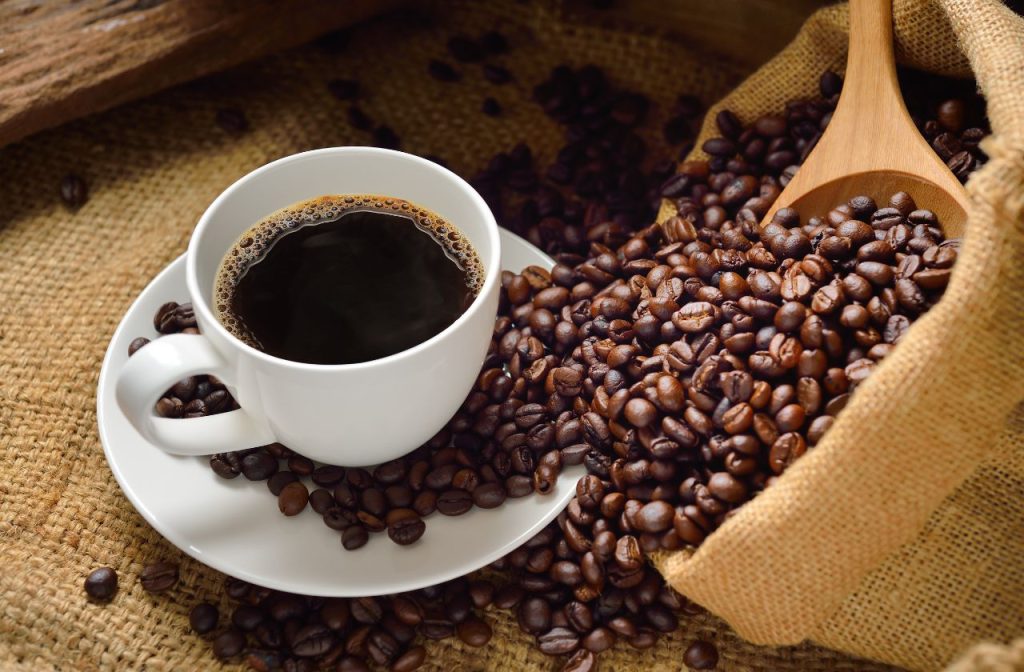
Selecting the right coffee beans the foundation of great Moka pot coffee and achieving a satisfying Moka pot experience. The type of bean not only influences the flavor and aroma of your coffee but also how well it responds to the Moka pot brewing method.
1. Arabica vs. Robusta: Understanding the Differences
Arabica beans, known for their smooth, complex flavors and aromatic qualities, Arabica beans are often preferred for Moka pot brewing. They typically have a sweeter, softer taste, with tones of sugar, fruits, and berries and higher acidity compared to Robusta.
Robusta beans are stronger and more robust, as the name suggests. They have a deeper, often more bitter flavor and are known for their earthy, nutty, and grainy overtones. Robusta beans generally contain more caffeine and can produce a thicker crema.
2. Flavor Profiles: What to Look For
When choosing beans for your Moka pot, consider the following flavor profiles:
- Chocolatey and Nutty: These flavors are often found in medium to dark roasts and can create a rich and comforting cup of coffee.
- Fruity and Floral: Typically found in lighter roasts, these flavors can offer a bright and refreshing cup, though they may be less pronounced in a Moka pot due to its intense extraction process.
- Bold and Spicy: Often associated with dark roasts, these flavors can add depth and intensity to your coffee, making it ideal for those who enjoy a strong and robust cup.
3. Recommended Brands and Blends for Moka Pot
Here are some recommended brands and blends that are well-suited for Moka pot brewing, making them some of the best coffee for Moka pot brewing:
- Lavazza Espresso Italiano: A popular choice for its balanced medium roast and rich flavor.
- Volcanica Espresso Dark Roast: Known for its low acidity and deep caramel and spice notes.
- Kicking Horse Cliff Hanger Espresso: A great medium roast option, offering a mix of sweet and bold flavors.
- Lifeboost Dark Roast: Ideal for those looking for a low-acidity option with robust flavor.
4. Freshness and Quality: Key Considerations
Always look for fresh beans. Check the roasting date, and opt for beans that have been roasted within the past month. Consider the quality and origin of the beans. Single-origin beans can offer unique flavor profiles, while blends can provide a balanced and complex cup.
5. Organic and Fair Trade Options
For those concerned about environmental and ethical issues, look for certifications like Organic, Fair Trade, or Rainforest Alliance. These certifications can indicate a commitment to sustainable and ethical coffee production.
The choice of coffee beans is vast and varied, and the best way to find your ideal Moka pot coffee is through experimentation. Try different beans, roasts, and origins to discover what suits your palate the best. Remember, the perfect coffee is a personal choice, and exploring different options is part of the fun of mastering Moka pot brewing.
Sustainability and Ethical Coffee Sourcing
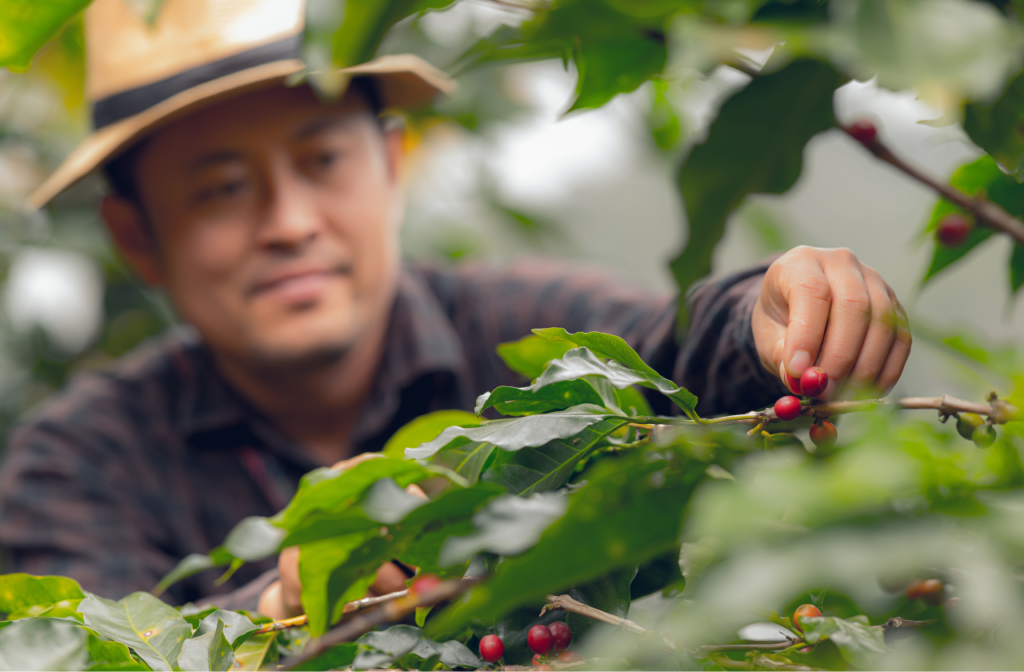
In today’s coffee culture, sustainability and ethical sourcing are more than just buzzwords; they’re essential considerations for many coffee enthusiasts. Choosing coffee that aligns with these values impacts the environment and farming communities positively and often results in a higher quality cup of coffee.
1. Understanding Sustainable Coffee Practices
- Environmentally Friendly Farming: This includes practices like shade-grown coffee, which preserves biodiversity, and organic farming, which avoids harmful pesticides.
- Carbon Footprint: Some coffee companies are working towards reducing their carbon footprint, either by modifying farming and production practices or by participating in carbon offset programs.
2. Ethical Sourcing and Fair Trade Coffee
- Fair Trade Certification: This ensures that the farmers who grow the coffee are paid a fair price for their beans, contributing to better living conditions and sustainable farming practices.
- Direct Trade: This is another model where coffee roasters buy directly from the farmers, often resulting in higher pay for farmers and more transparency for consumers.
3. Coffee Brands That Embrace Sustainability
- Lifeboost Coffee: Known for its low-acid, high-quality beans, Lifeboost also prides itself on sustainable and ethical farming practices.
- Tiny Footprint Coffee: They claim to be the world’s first carbon-negative coffee company, offsetting their carbon footprint through reforestation efforts.
- Kicking Horse Coffee: This brand is Fair Trade and Organic certified, ensuring both environmental and social responsibility.
4. How Sustainability Affects Coffee Quality
Sustainable farming practices often lead to healthier coffee plants and higher-quality beans. This is because these practices emphasize the careful stewardship of the land and the well-being of the coffee plants.
Ethically sourced beans often come from smaller farms and cooperatives that can focus more on quality than mass-produced counterparts.
5. Making an Informed Choice
When selecting coffee for your Moka pot, consider looking for certifications or company policies related to sustainability and ethical sourcing.
Remember that choosing sustainable and ethically sourced coffee supports responsible practices and often results in a richer and more flavorful coffee experience.
By being mindful of where your coffee comes from and how it’s produced, you promote sustainable and ethical practices in the coffee industry. This awareness can enrich your coffee experience, knowing that your choice positively impacts the environment and coffee-growing communities.
The Italian Connection: Moka Pot’s Origin and Italian Coffee
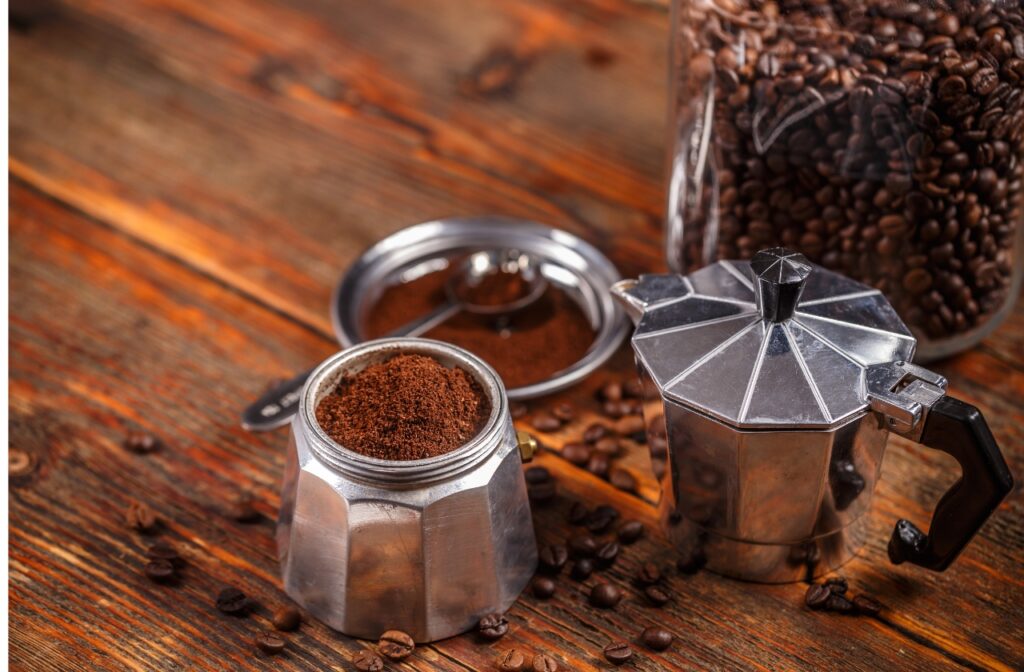
The Moka pot, a symbol of Italian coffee culture, has a rich history that adds to its charm. Invented in 1933 by Alfonso Bialetti, this iconic coffee maker revolutionized the way espresso was made and enjoyed at home. With its distinctive octagonal design, the Moka pot is not just a coffee maker; it’s a piece of Italian heritage.
Understanding the Italian Coffee Philosophy
- Quality Over Quantity: Italian coffee culture emphasizes the quality of the coffee. This is evident in the meticulous selection of beans and the precise roasting processes.
- Espresso as a Standard: In Italy, espresso is the coffee standard, and the Moka pot is designed to emulate this style, delivering a strong, concentrated brew.
Italian Coffee Brands and Their Relevance to Moka Pot Brewing
Lavazza and Illy are two of the most renowned Italian coffee brands, and their blends are often optimized for espresso-style brewing methods like the Moka pot. Italian brands typically offer blends that bring out the best in Moka pot brewing – rich, full-bodied, with a smooth finish.
The Role of Italian Coffee in Moka Pot Brewing
Using Italian coffee in a Moka pot can create an experience that’s both traditional and modern, allowing you to savor a piece of Italian coffee history in every cup. Italian coffees often have a balanced profile that works perfectly with the extraction method of the Moka pot, resulting in a harmonious blend of acidity, sweetness, bitterness, and body. This makes Italian coffee the ideal candidate for the best coffee for Moka pot brewing methods.
Tips for Choosing Italian Coffee for Your Moka Pot
- Roast Type: Look for medium to dark roasts, as they complement the Moka pot’s brewing style.
- Grind Size: Opt for a medium to medium-fine grind – too fine, and it may clog the pot; too coarse, and the water will pass through too quickly.
- Freshness: Freshness is key, so check the roast date and opt for recently roasted beans for the best flavor.
Embracing the Italian Coffee Experience
By choosing Italian as the best coffee for your Moka pot, you’re not just brewing a cup of coffee; you’re indulging in a rich cultural experience. Each brew becomes a nod to the traditional Italian way of life, celebrating the deep-rooted love and respect for coffee. So, as you sip your Moka pot brew, remember, you’re enjoying a timeless piece of Italian coffee culture.
Expert Brewing Tips for Moka Pot Coffee
Mastering the art of Moka pot brewing involves a bit more than just adding coffee and water. These expert tips will help you refine your brewing technique to extract the best flavor from your coffee beans.
- Cleanliness is Key: Always start with a clean Moka pot. Residual coffee oils and grounds from previous brews can affect the taste of your coffee.
- Check the Gasket and Filter: Ensure the rubber gasket and the filter are in good condition to avoid any leaks or uneven brewing.
- Right Grind Size: Use a medium to medium-fine grind for optimal extraction. Too fine, and you risk clogging; too coarse, and your coffee will be under-extracted.
- Don’t Overpack: Fill the filter basket with ground coffee and level it off, but avoid tamping it down. Overpacking can create excessive pressure and affect the extraction.
- Use Fresh, Filtered Water: The quality of your water can significantly impact the taste of your coffee. Soft, filtered water is usually the best choice.
- Pre-heat the Water: Start with pre-heated water to shorten the brewing time and prevent over-extraction.
- Low to Medium Heat: Place the Moka pot on low to medium heat. High heat can burn the coffee and lead to a bitter taste.
- Listen for the Gurgling Sound: When you hear a hissing or gurgling sound, it means the coffee is done brewing. Remove the pot from heat immediately to prevent over-extraction.
- Stir the Coffee: Before pouring, stir the coffee in the top chamber to blend the layers for a uniform flavor.
- Serve Immediately: Moka pot coffee is best enjoyed fresh, so serve it as soon as it’s ready.
- Regular Cleaning: After each use, disassemble your Moka pot and wash it with warm water. Avoid using soap or detergents as they can leave a residue.
- Dry Thoroughly: Make sure all parts are completely dry before reassembling to prevent rust and corrosion.
- Adjust to Taste: Experiment with different beans, roasts, and grind sizes. Adjusting the amount of coffee and water can also help you find your perfect cup.
- Keep a Coffee Log: Keep track of your brewing parameters and taste notes. This will help you replicate a great brew and adjust where necessary.
By following these expert tips from weird coffee people, you can elevate your Moka pot brewing skills and consistently create a delightful coffee experience right in your kitchen. Remember, the beauty of the Moka pot lies in its simplicity and the rich, flavorful coffee it produces.
Final Thoughts For Best Coffee For Moka Pot Brewing
As we wrap up this comprehensive guide to selecting the best coffee for moka pot brewing and brewing the best coffee with this device, it’s clear that this traditional brewing method is much more than a simple way to make coffee. It’s an art form that combines the right tools, techniques, and passion to create a cup rich in flavor and steeped in tradition.
Remember, the journey to making the perfect cup of Moka pot coffee is personal and subjective. What works for one coffee enthusiast might not work for another. Don’t be afraid to experiment with different beans, roasts, and brewing variables. Each cup is an opportunity to refine your technique and discover what you enjoy the most. So go ahead, fire up your Moka pot, and immerse yourself in the rich, aromatic world of coffee brewing. Each cup is a new experience, a new story, and a delightful journey into the heart of coffee culture. Choose the best coffee for your Moka pot and enjoy your traditional coffee brewing!
-
Espresso Express eBook
R180,00 -
From Bean To Brew eBook
R450,00 -
Great Coffee, Made Simple
R0,00
